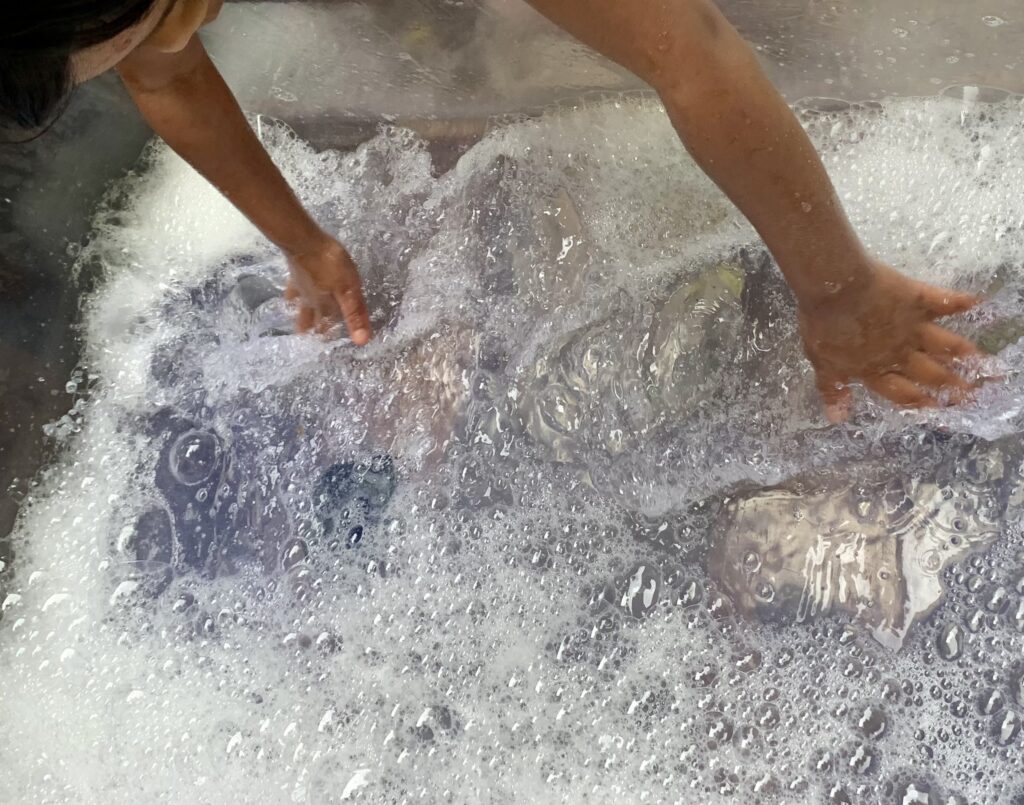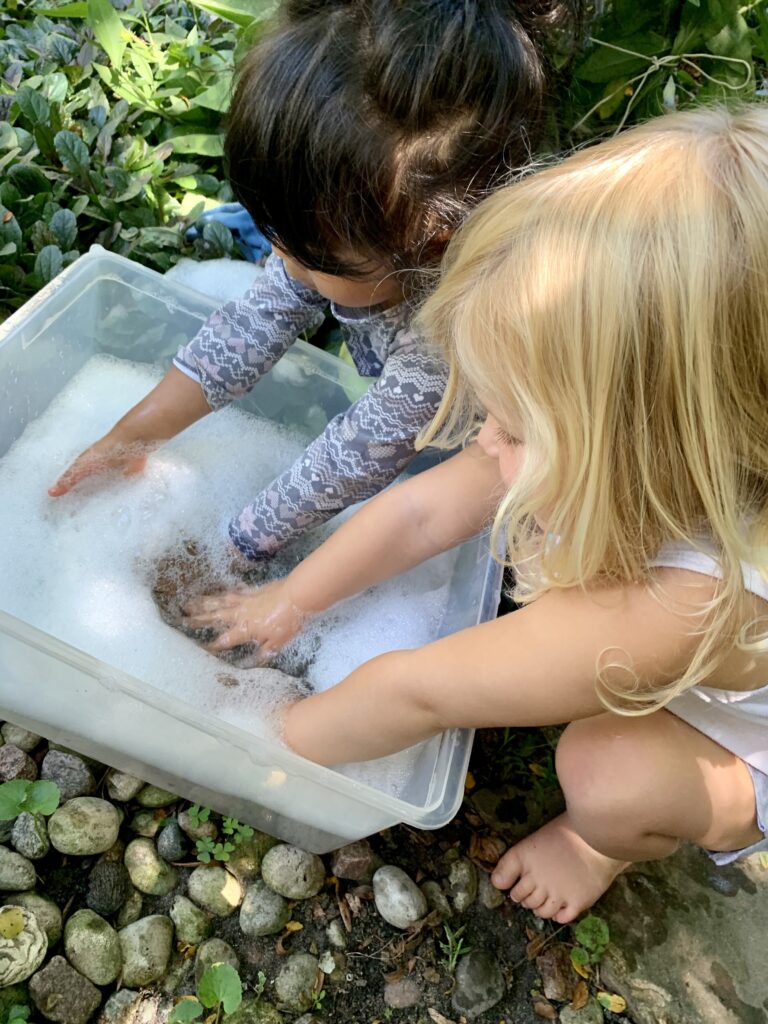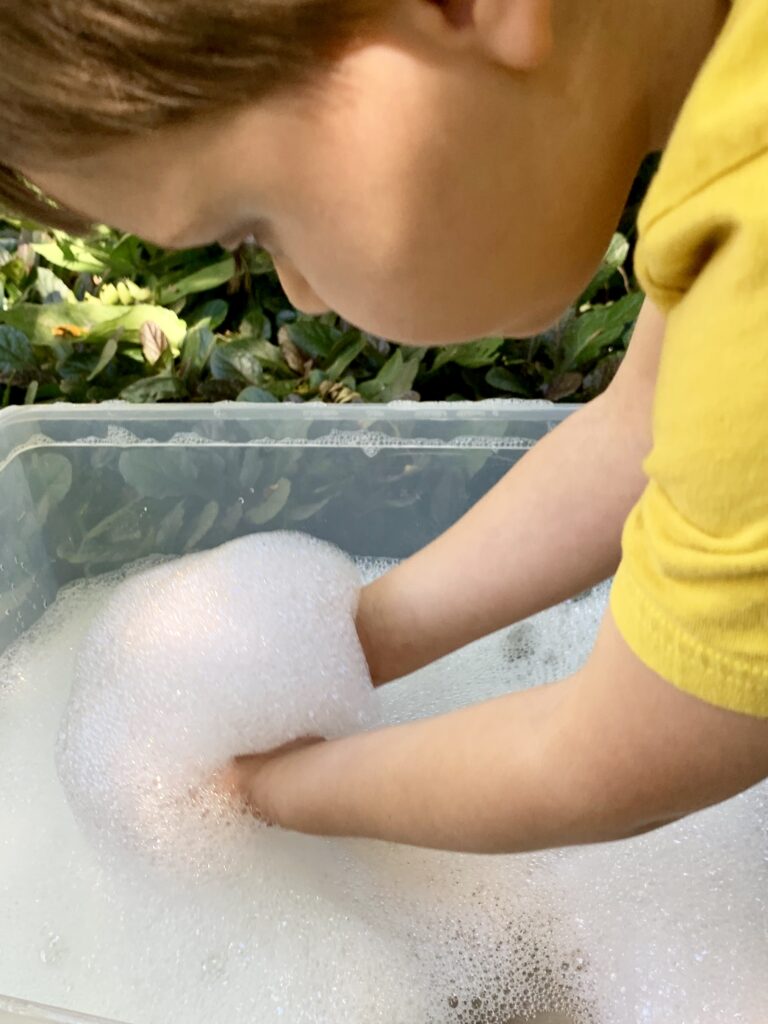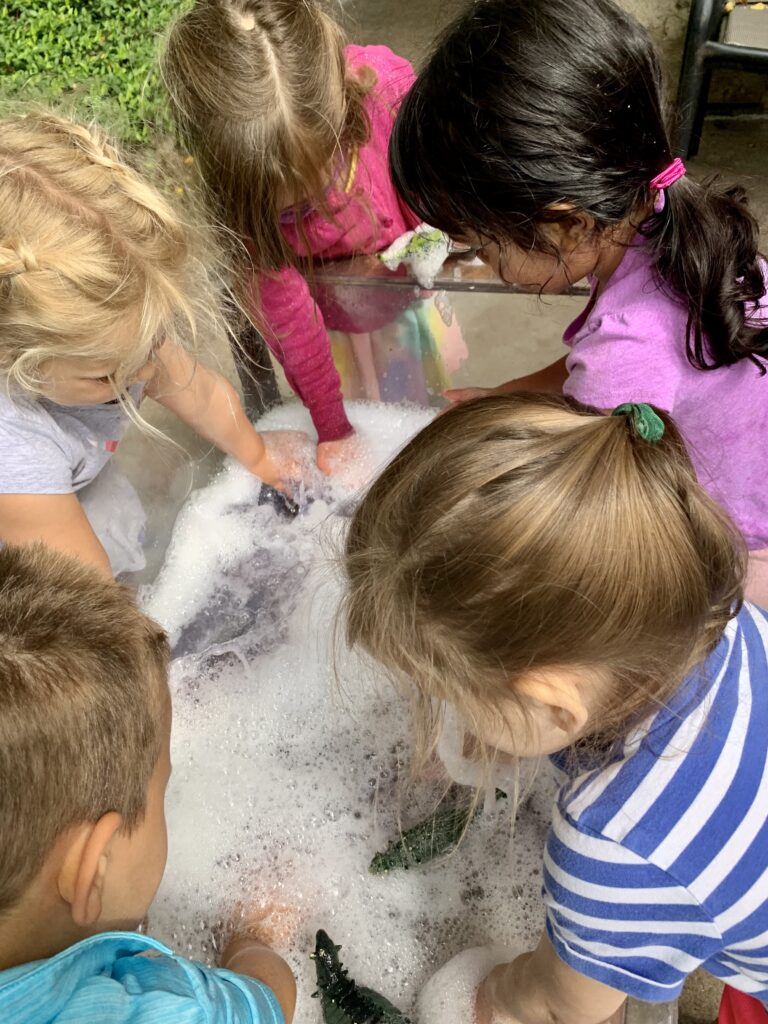The Secret Agent of Bubbles

“If you wiggle your hands like this, you can make lots and lots of bubbles!” exclaims Hudson. “Watch!”
Piper and Hudson are elbow deep in a tub of water, splashing about happily as they investigate cause and effect in a moment of playful learning. Science begins with curiosity, which leads to discovery and exploration. Learning science through play in the early years is just plain fun!
“Can you add soap to our water today?” asks Anna Maria.
“Yes! Can we? Please?” pleads Hudson.
Water play is always a winner. But when we add bubbles to the mix, we enter a new level of STEM investigation. A quick squirt of dishwashing detergent (such as Dawn or Joy) will produce hundreds of satisfying bubbles in a small tub or water table.

Keep a variety of containers and tools on hand to add to the learning and fun. Cups and bowls and spoons can be used to scoop, pour and splash—actions that enable children to experiment with scientific concepts such as gravity and force.
Funnels, sieves, measuring cups and turkey basters can be used to investigate the movement of the water and bubbles. This activity introduces children to the physics of flow and motion, along with measurement and chemistry as they mix solutions.
I watch as the children make waves and wash rocks, dolls and plastic animals. The play is calm and the water slows down even the most active of children.

Meanwhile, Thomas’s curiosity is taking the scientific investigation up a notch.
“When we wiggled our hands and there was just water, we made a few bubbles,” he observes. “But when we added the soap, we got a whole lot of bubbles! How does that blue soap make so many bubbles?”
“A bubble is made up of water and air,” I explain. “You can form bubbles in any water, but they break pretty quickly. The bubbles last longer when the water is mixed with soap because the soap acts as a kind of glue. We call that a ‘bonding agent‘ and it helps keep the air in the bubble longer.”
“You mean the soap is like a SECRET AGENT that captures the air and keeps it inside the bubble?” asks six-year-old Michela, our leader in the dramatic play of crime and mysteries.
Wow, sure! That will definitely work as an explanation. I never expected the children to remember the term “bonding agent,” but introducing new vocabulary is part of the fun of learning. Michela just made it easier for all of us to understand what makes a bubble!

A morning spent playing with soap bubbles offers a wealth of opportunities to document your science standards, which you can later share with parents to show them how bubble play leads to some serious STEM learning.
Here are just a few examples of the ways that our “Secret Agent of Bubbles” (aka dish soap) can be used to fuel STEM learning:
- Playing with bubbles allows children to make predictions and test their predictions quickly.
- Popping bubbles is a great example of cause and effect.
- Children can predict whether an object will sink toward the bottom of the tub or float on the top. This fun activity enables children to learn about scientific concepts such as density and buoyancy.
When children are playing with bubbles, they are observing and comparing, forming hypotheses, testing their hypotheses and arriving at conclusions—all on their own. This is the scientific method!

“We don’t have to see it as a choice between play or academics,” says Alissa Mwenelupembe, senior director for early learning program accreditation at the National Association for the Education of Young Children (NAEYC). “Play should be academics for preschoolers.”
Science can be enjoyable and spontaneous when we intentionally set the stage for learning. Take advantage of water play on these hot summer days and you’ll be checking off your early learning standards in no time!
This is a fun way of demonstrating how water can be affected by air.
Excellent
Awesome way to desmotrate water and other elements,
The children always like to play with bubbles.
We play with bubbles outside alot. We let the wind if possible blow the bubbles, we have put soap in puddles and splashed making bubbles and we watch them float in the air.
What a great way to share the water and air! Secret Agent on the way!
I will use this lesson
the bubbles lesson plan is going to be fun
This a great example on how air can change water.
Maybe do a bubble paint art
Playing with bubbles is always fun! I’ve added plastic toys and scrubbers. The children have fun and don’t realize they are cleaning the toys.
We’ll have a water play table filled with water and floatables…we’ll see what sinks and floats
This is a fun way of demonstrating how water can be affected by air.
This is a great example of an activity that examine water and air as they work in tandem to create bubbles.
Lamont Jackson
the children love the bubbles and they can use this experiment to further understand the concepts of them.
the children love the bubbles and the teacher can use this experiment to further understand the concepts of them.
Can you do bubbles when it is cold outside
Explore what happens
Kids love to play with bubbles so they can explore
Kids loveto play with bubbles
What a fun way to change the properties of water.